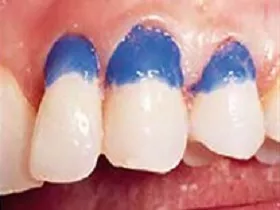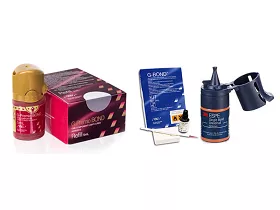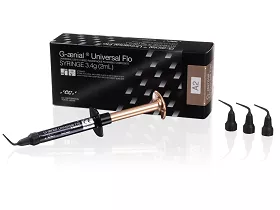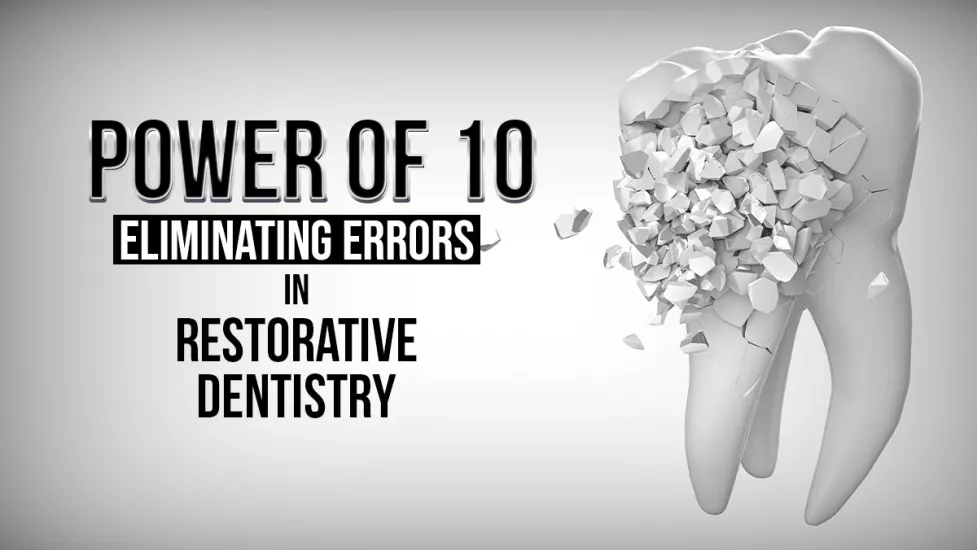Power of 10 – Eliminating Errors In Restorative Dentistry
08/28/2023
Many clinicians have reported complications in usage of composite resins. Sensitivity, pain, debonding, secondary caries, pulpitis, discoloration, visible margins and fractures have been routinely reported. In this article, we try to dissect the entire procedure step by step and try to diagnose the various possible reasons for these complications. With the etiology understood, we try and define a treatment protocol to avoid these complications. We also suggest materials for the same.
Improper Preparation
This includes incomplete removal of caries, which can lead to complications in future. Soft decay can be effortlessly removed with steel burs from Meisenger. Caries indicator can check for presence of any carious remnants. In case of accidental exposure, material of choice that can be used to seal the Exposure can be Bioceramic glass.
Bevel to be given only on labial surface. Palatal bevels to be avoided. Bevel should be irregular bavel.
Lack of isolation
Bleeding point from the gingiva can pose problems to any clinician trying to get a clean field to start the restorative process. Haemostatic agent of choice in aesthetic dentistry is aluminium chloride 25%. It controls bleeding through vaso constriction and hence will not leave behind brown coagulum that we see with haemostatics that contain ferric sulfate 20%.
One may also use gingival retraction cords. Cotton braided cords which are non – impregnated should be preferred. Care taken should be that cord should be wet during insertion and removal both.
Need For Lining
Lining under composites is done when the preparation has gone very close to the pulp horn and this may cause sensitivity / Pain / Pulpitis in future. A liner may prevent such issues.
A liner should be a material that is friendly to the pulp (Bio compatible). This requirement rules out all light curable materials. All basic literature educate us that the most bio compatible material is glass ionomer. Among the entire bouquet of available glass ionomers, the ideal liner would be FUJI VII from GC. FUJI VII releases 6 times more fluoride than any other GIC. This leads to formation of fluorapatite and thereby prevents any complications in future. Care to be taken:-
- Apply dentin conditioner for 20 sec prior to placement of fuji VII.
- Avoid blowing air on fuji VII after placement.

Etching
With the advent of 7th generation bonding agents (Single step), a lot of practitioners have stopped using orthophosphoric acid. Use of orthophosphoric acid on enamel will ensure better bond strength.
on enamel (main drawback of 7th gen bonds) A Viscous etching is a good choice as the clinician can restrict it to enamel (highly viscous material) and prevents over etching unlike less viscous etchants that cause sensitivity.

Bonding
Gold Standards have been 4th Gen. Bonding agents, but with advent of newer generation bonding agents (7th & 8th) the dentine & enamel bonding are as effective, in fact much better than the older generations & with less post operative failures, like sensitivity and debondings. When these new generation bonding system are used with “selective etching” technique, they have performed better & provides hassle-free excellent bond strengths.

Base
The first resin increment of 1mm very often fractures under occlusal load due to use of low strength flowable resins as base. The material of choice is G-aenial Universal Flow from GC. Have filler content around 70% which is like that of a restorative composite. G-aenial Flow may be preferred as it has glass fillers which will help in blending with Fuji VII used as a liner.
Body
The body of the restoration is then built with a restorative resin, which we want to be easy to handle, convenient to place, easily shaped, aesthetically good, fracture resistant, gloss retaining, margin concealing.
The material of choice is G-aenial composites which have all the above properties and complies with latest requirements (BPA free). Very few products have yet complied with this requirement. High volumetric content ensures more number of restorations per tube, thereby ensuring parity in terms of cost per restoration with other brands.
A standard composite will require material worth Rs. 70/- for a standard sized restoration and G-aenial will require Rs.90/-.
Also, currently, G-aenial composites provide an age-related choice of enamel shade which ensures unmatched colour matching and invisible aesthetics.
Polishing
Using all four grits in sequential order will give a beautifully finished restoration that only requires a composite sealer to finish the procedure. Incomplete polishing leads to discoloration & staining. Polishing to be done with diamonds only – paste / felts / discs / buffs . Aluminum oxide impregnated discs ro be avoided .
Composite Sealer
These will seal off margins, smoothen micro cracks / roughness. They will increase surface hardness and provide glaze. Optiglaze from GC is an excellent option for glaze as well as minor shade corrections / characterization.
Curing Machine
Light curing gun should have specified intensity & wavelength. LED lights give 1000 mw/cm2 intensity to start with. These are preferred as intensity does not decrease with time – Some clinicians opt for machines with plasma mode as a 3000 mw/cm2 intensity is theorised to cure to greater depths. Though question marks persist regarding the concept of bulk fill, it is proven that plasma mode ensures 3 second curing time.
The wavelength is where most machines fail to make the cut. The latest restorative materials require exposure to lower wavelengths as they contain proprietary initiators (Best absorption at 400 nm) CQ still absorbs best at 470 nm. Machines that have a wavelength rang of 400nm up to 500 nm ensures against failures due to incomplete curing.
Machines – 𝐅𝐋𝐀𝐒𝐇 𝐌𝐀𝐗 𝐏𝟑 𝐖𝐒 𝟒𝐖 (𝐥𝐢𝐠𝐡𝐭 𝐜𝐮𝐫𝐢𝐧𝐠 𝐩𝐞𝐧}- 𝐓𝐡𝐞 𝐌𝐨𝐬𝐭 𝐏𝐨𝐰𝐞𝐫𝐟𝐮𝐥 𝐂𝐮𝐫𝐢𝐧𝐠 𝐋𝐢𝐠𝐡𝐭 𝐨𝐧 𝐭𝐡𝐞 𝐌𝐚𝐫𝐤𝐞𝐭”. This comes with 5 Seconds cure and Broader Emission Spectrum – wavelength 390 – 470nm. High intensity and low curing time. It has long battery capacity, with low weight & noise.
The 10 points covered above in this special issue of power of 10 are points that have been discussed with experts and listed out. The theories behind various types of failures are well documented and the materials suggested are proven to be effective in these cases. All these recommended materials, equipment and instruments are tried and tested & come from leading dental companies of the world which are following the highest standards in manufacturing. There may possibly exist some optional choices. Readers are advised to study them in detail, before using.

Dr. Santosh Ravindran graduated from Govt. Dental College Mumbai in 1991. He has a private practice in Mumbai since 32 years. He is the Clinical Director – Dentistry – Special Olympics USA and hon. life member of Research Society for Children in need of Special Care. Fellow of International College of Dentists Fellow of Pierre Fauchard academy . He has occupied several positions in Indian Dental Association at local, state and national level. He has been awarded – Samaj Seva Vibhushan 1997 and Best Citizens of India Award 2008 . He is the proud recipient of Rao Memorial Famdent Lifetime Achievement award in the field of Special Care Dentistry.



